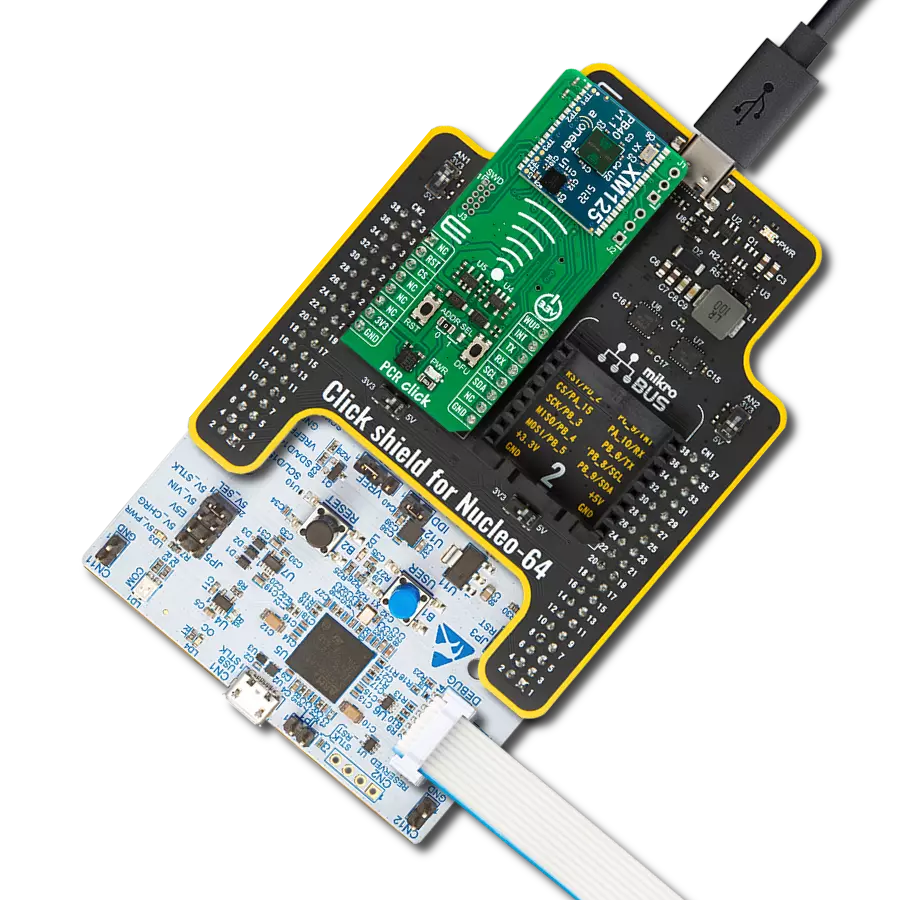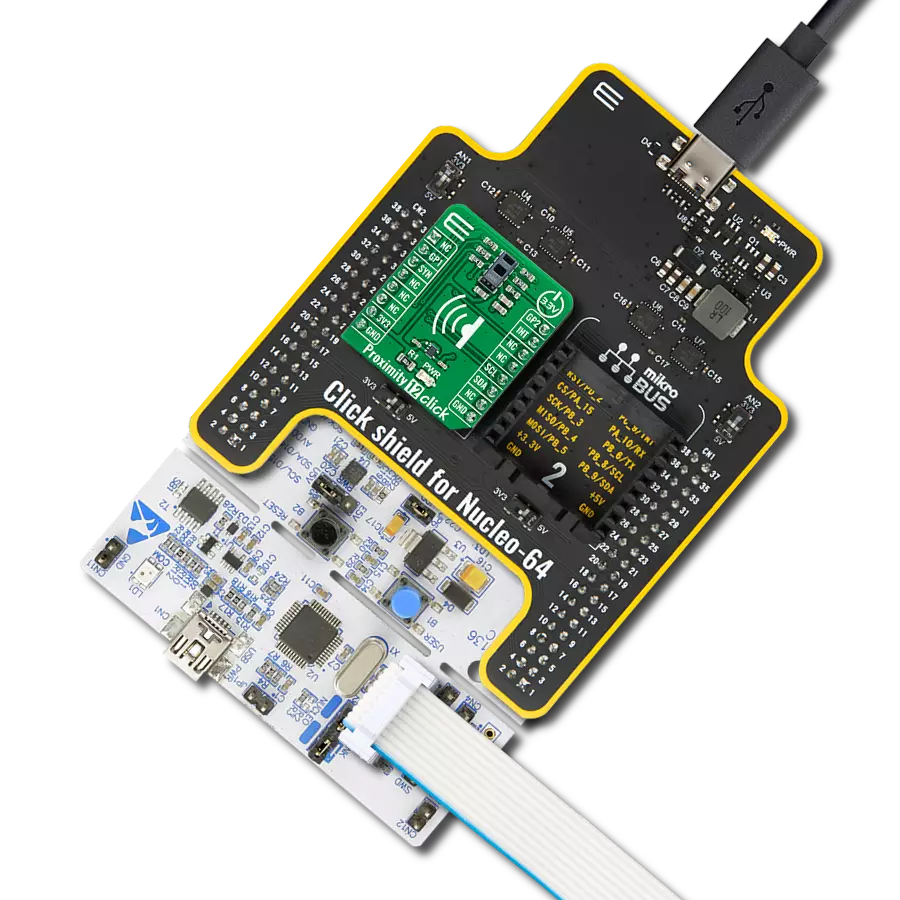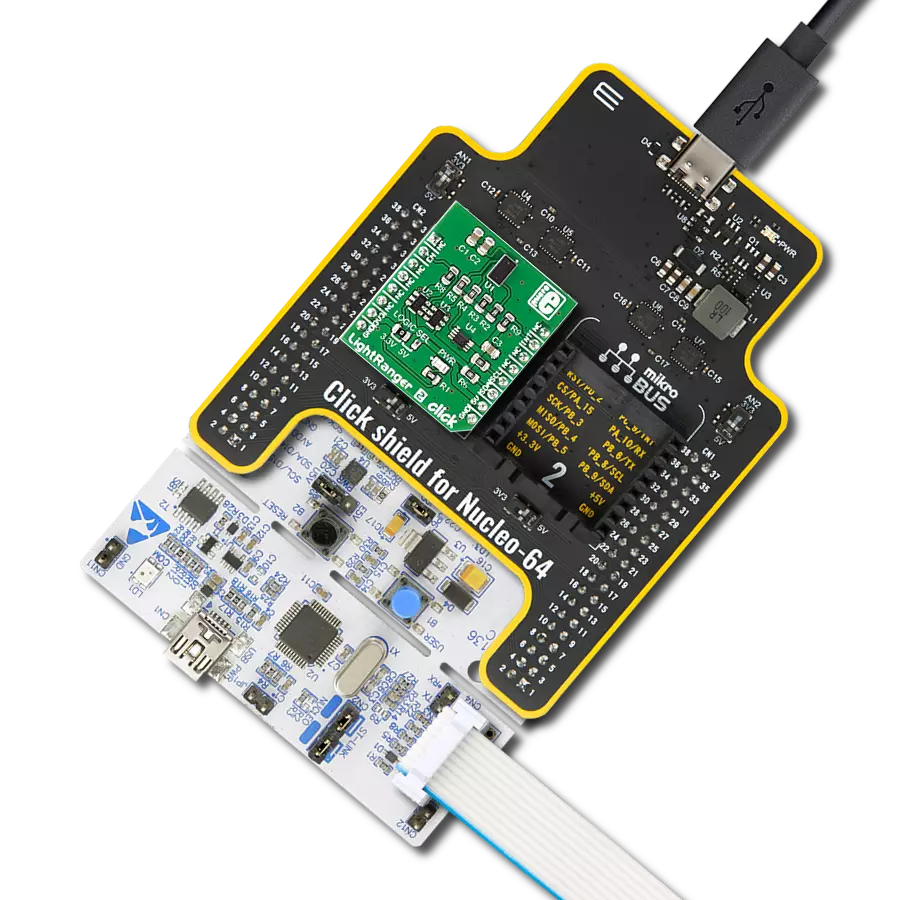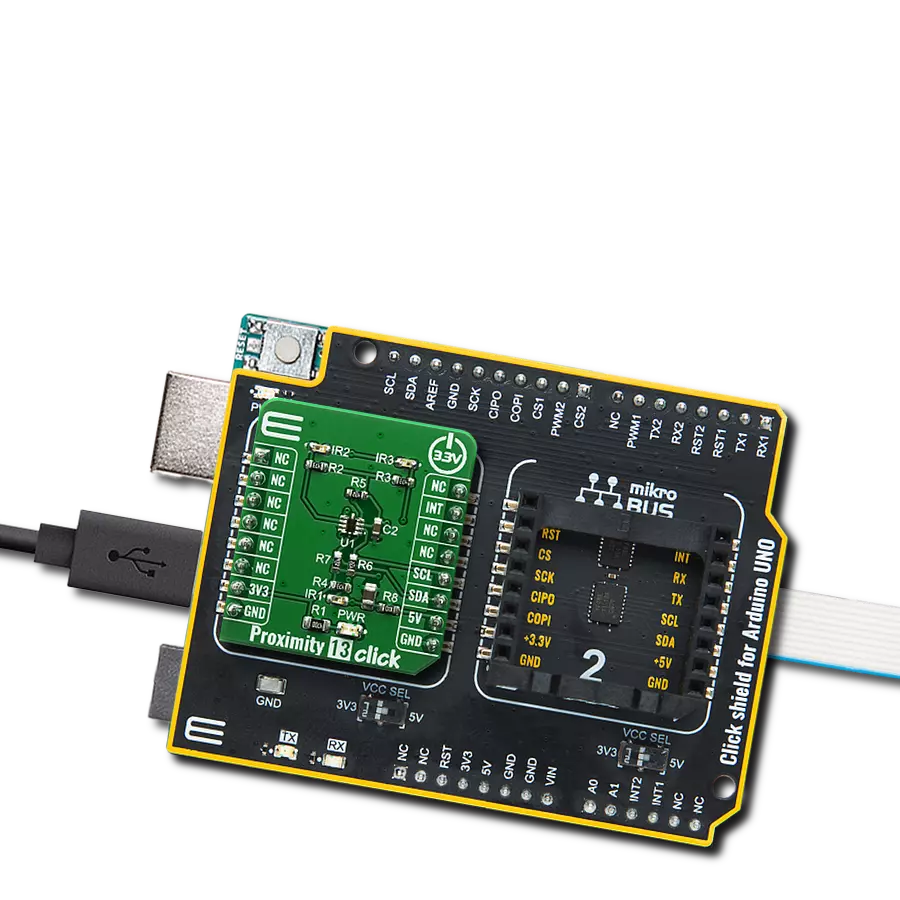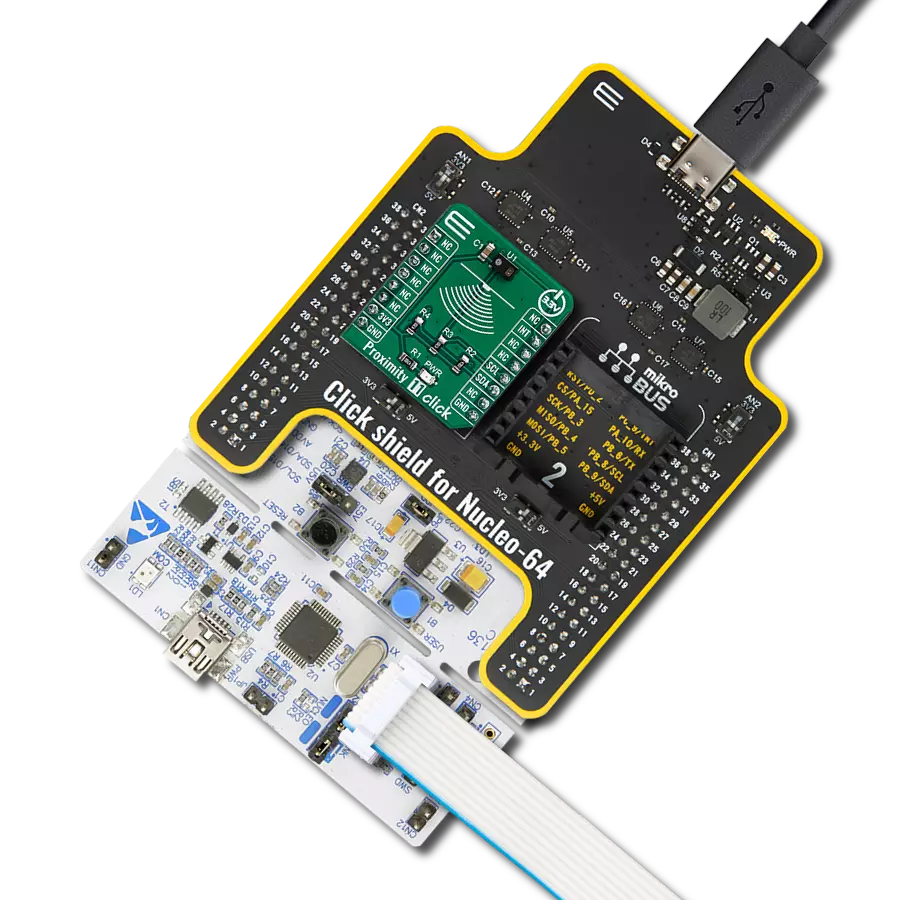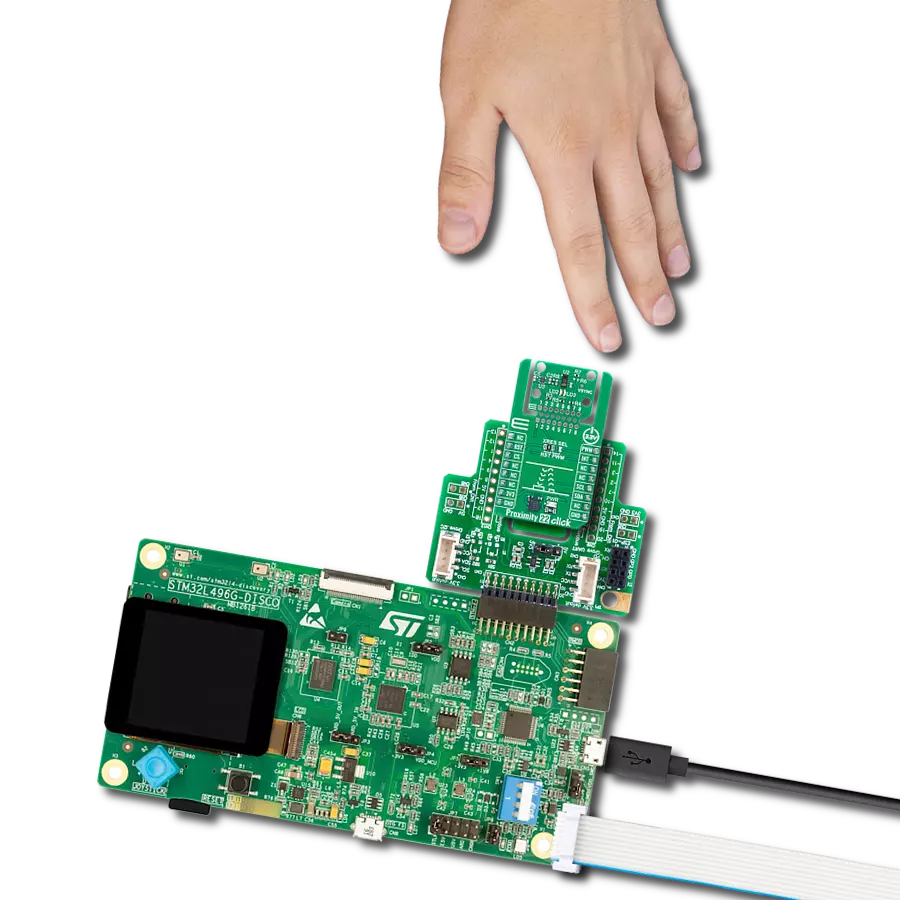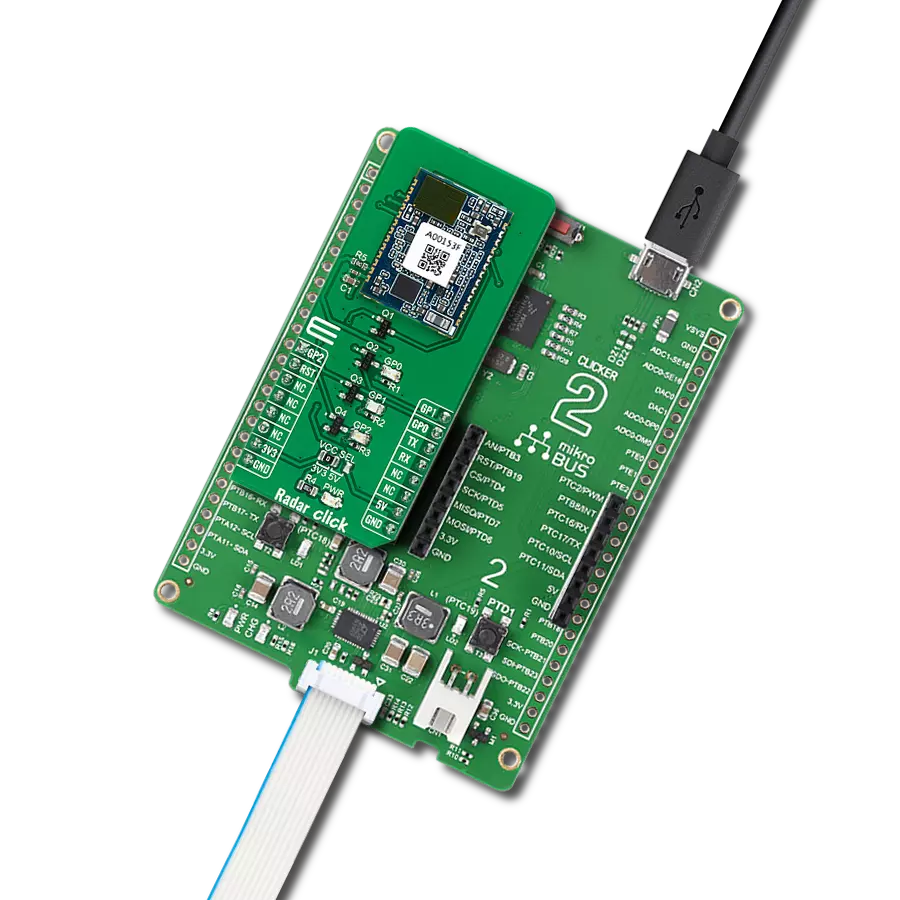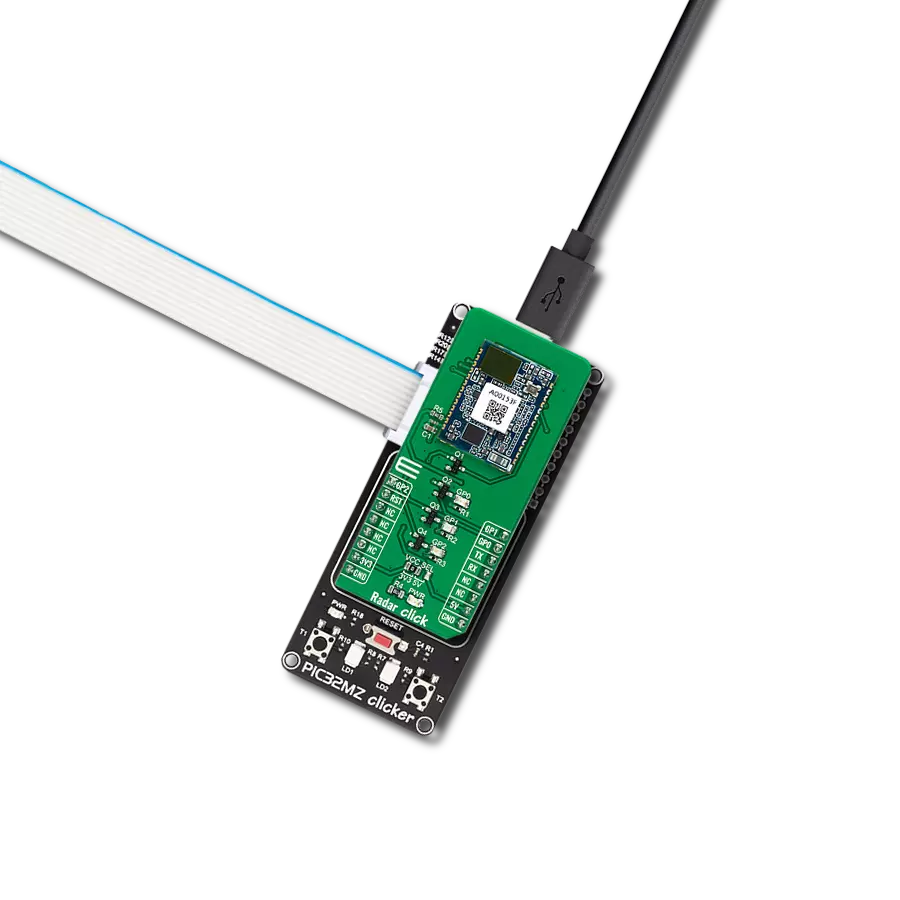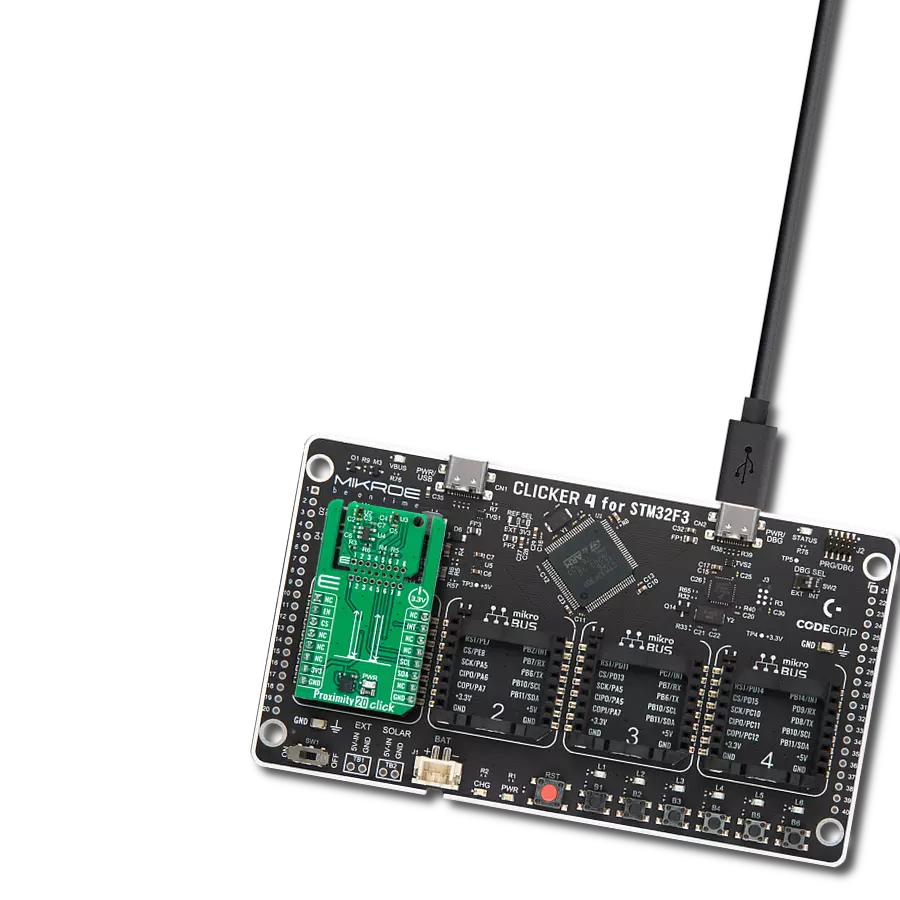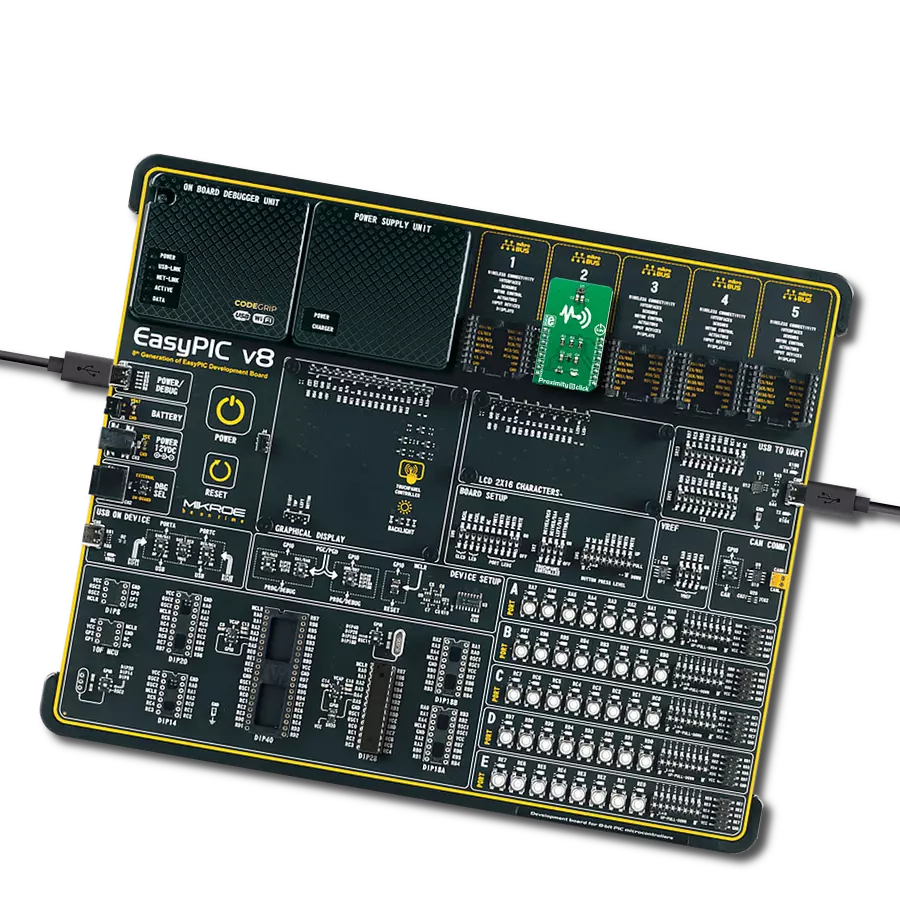Enhance your projects with precise proximity sensing and reliable distance measurements, even in challenging ambient light conditions
A
A
Hardware Overview
How does it work?
Proximity 21 Click is based on the VL53L4ED, a high-precision Time-of-Flight (ToF) proximity sensor from STMicroelectronics, known for its extended temperature capability. This sensor is made for accurate short-range measurements, offering a field of view (FoV) of 18° and measuring distances from 1mm up to 1300mm under standard conditions and up to 1150mm in extended temperature environments. The VL53L4ED operates effectively in temperatures ranging from -40°C to 105°C, ensuring consistent performance even in harsh industrial settings. Additionally, it provides reliable distance measurements up to 800mm even in ambient light conditions of 5klx, making it ideal for applications requiring precise proximity sensing such as industrial automation, security systems, robotics, smart lighting, and biometric distance measurements. The VL53L4ED uses STMicroelectronics' FlightSense technology,
allowing it to measure absolute distances regardless of target color or reflectance. It includes a SPAD (single photon avalanche diode) array, enhancing its performance across ambient lighting conditions and various cover glass materials. Additionally, the sensor integrates a VCSEL (vertical-cavity surface-emitting laser) that emits an invisible 940nm IR light, certified as Class 1 eye-safe. Proximity 21 Click is designed in a unique format supporting the newly introduced MIKROE feature called "Click Snap." Unlike the standardized version of Click boards, this feature allows the main IC area to become movable by breaking the PCB, opening up many new possibilities for implementation. Thanks to the Snap feature, the VL53L4ED can operate autonomously by accessing its signals directly on the pins marked 1-8. Additionally, the Snap part includes a specified and fixed screw hole position, enabling users to secure
the Snap board in their desired location. This Click board™ uses a standard 2-wire I2C interface for communication with the host MCU, supporting Fast Mode Plus with a clock frequency of up to 1MHz. In addition to the interface pins, the sensor also uses the XSH shutdown pin from the mikroBUS™ socket for device power-up and boot sequence. The device can be fully powered down when not in use and then reactivated by the host MCU using the XSH pin. It also uses the GP1 pin from the mikroBUS™ socket as a hardware interrupt, along with a red GP1 LED indicator, to signal and visually indicate various conditions. This Click board™ can be operated only with a 3.3V logic voltage level. The board must perform appropriate logic voltage level conversion before using MCUs with different logic levels. Also, it comes equipped with a library containing functions and an example code that can be used as a reference for further development.
Features overview
Development board
Arduino UNO is a versatile microcontroller board built around the ATmega328P chip. It offers extensive connectivity options for various projects, featuring 14 digital input/output pins, six of which are PWM-capable, along with six analog inputs. Its core components include a 16MHz ceramic resonator, a USB connection, a power jack, an
ICSP header, and a reset button, providing everything necessary to power and program the board. The Uno is ready to go, whether connected to a computer via USB or powered by an AC-to-DC adapter or battery. As the first USB Arduino board, it serves as the benchmark for the Arduino platform, with "Uno" symbolizing its status as the
first in a series. This name choice, meaning "one" in Italian, commemorates the launch of Arduino Software (IDE) 1.0. Initially introduced alongside version 1.0 of the Arduino Software (IDE), the Uno has since become the foundational model for subsequent Arduino releases, embodying the platform's evolution.
Microcontroller Overview
MCU Card / MCU
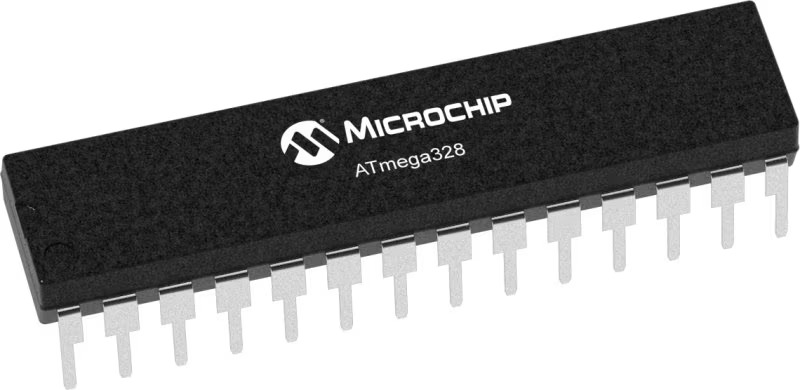
Architecture
AVR
MCU Memory (KB)
32
Silicon Vendor
Microchip
Pin count
32
RAM (Bytes)
2048
You complete me!
Accessories
Click Shield for Arduino UNO has two proprietary mikroBUS™ sockets, allowing all the Click board™ devices to be interfaced with the Arduino UNO board without effort. The Arduino Uno, a microcontroller board based on the ATmega328P, provides an affordable and flexible way for users to try out new concepts and build prototypes with the ATmega328P microcontroller from various combinations of performance, power consumption, and features. The Arduino Uno has 14 digital input/output pins (of which six can be used as PWM outputs), six analog inputs, a 16 MHz ceramic resonator (CSTCE16M0V53-R0), a USB connection, a power jack, an ICSP header, and reset button. Most of the ATmega328P microcontroller pins are brought to the IO pins on the left and right edge of the board, which are then connected to two existing mikroBUS™ sockets. This Click Shield also has several switches that perform functions such as selecting the logic levels of analog signals on mikroBUS™ sockets and selecting logic voltage levels of the mikroBUS™ sockets themselves. Besides, the user is offered the possibility of using any Click board™ with the help of existing bidirectional level-shifting voltage translators, regardless of whether the Click board™ operates at a 3.3V or 5V logic voltage level. Once you connect the Arduino UNO board with our Click Shield for Arduino UNO, you can access hundreds of Click boards™, working with 3.3V or 5V logic voltage levels.
Used MCU Pins
mikroBUS™ mapper
Take a closer look
Click board™ Schematic
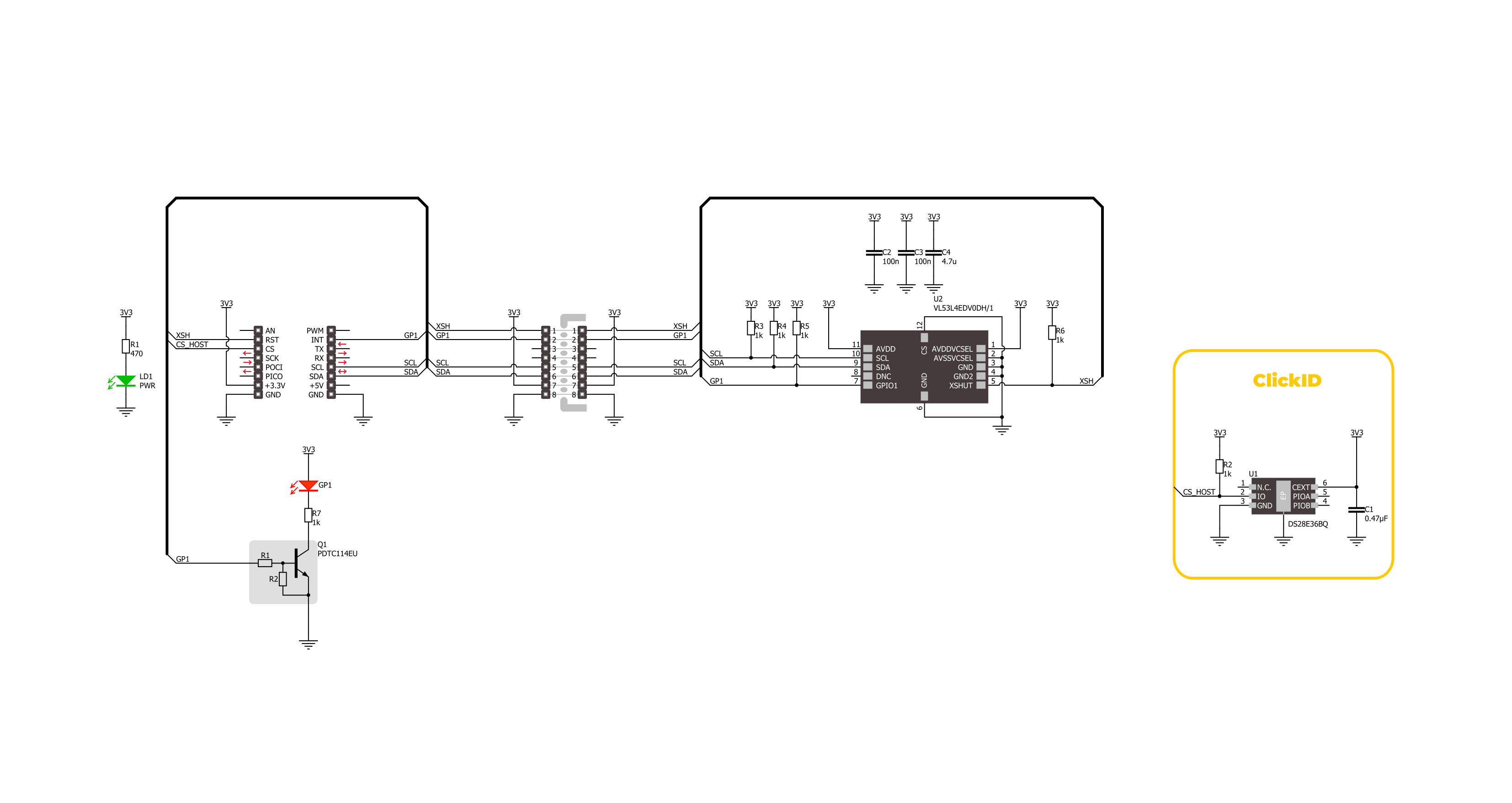
Step by step
Project assembly
Software Support
Library Description
This library contains API for Proximity 21 Click driver.
Key functions:
proximity21_get_gpio1_pin- This function returns the GPIO1 (interrupt) pin logic state.proximity21_get_result- This function gets the results reported by the sensor.proximity21_clear_interrupt- This function clears the data ready interrupt.
Open Source
Code example
The complete application code and a ready-to-use project are available through the NECTO Studio Package Manager for direct installation in the NECTO Studio. The application code can also be found on the MIKROE GitHub account.
/*!
* @file main.c
* @brief Proximity 21 Click example
*
* # Description
* This example demonstrates the use of Proximity 21 Click board by reading and displaying
* the target distance in millimeters on the USB UART.
*
* The demo application is composed of two sections :
*
* ## Application Init
* Initializes the driver and performs the Click default configuration.
*
* ## Application Task
* Waits for a data ready interrupt, then reads the measurement results and logs
* the target distance (millimeters) and signal quality (the higher the value the better
* the signal quality) to the USB UART.
*
* @author Stefan Filipovic
*
*/
#include "board.h"
#include "log.h"
#include "proximity21.h"
static proximity21_t proximity21;
static log_t logger;
void application_init ( void )
{
log_cfg_t log_cfg; /**< Logger config object. */
proximity21_cfg_t proximity21_cfg; /**< Click config object. */
/**
* Logger initialization.
* Default baud rate: 115200
* Default log level: LOG_LEVEL_DEBUG
* @note If USB_UART_RX and USB_UART_TX
* are defined as HAL_PIN_NC, you will
* need to define them manually for log to work.
* See @b LOG_MAP_USB_UART macro definition for detailed explanation.
*/
LOG_MAP_USB_UART( log_cfg );
log_init( &logger, &log_cfg );
log_info( &logger, " Application Init " );
// Click initialization.
proximity21_cfg_setup( &proximity21_cfg );
PROXIMITY21_MAP_MIKROBUS( proximity21_cfg, MIKROBUS_1 );
if ( I2C_MASTER_ERROR == proximity21_init( &proximity21, &proximity21_cfg ) )
{
log_error( &logger, " Communication init." );
for ( ; ; );
}
if ( PROXIMITY21_ERROR == proximity21_default_cfg ( &proximity21 ) )
{
log_error( &logger, " Default configuration." );
for ( ; ; );
}
log_info( &logger, " Application Task " );
}
void application_task ( void )
{
proximity21_data_t results;
// Wait for a data ready interrupt
while ( proximity21_get_gpio1_pin ( &proximity21 ) );
if ( PROXIMITY21_OK == proximity21_get_result ( &proximity21, &results ) )
{
log_printf( &logger, " Distance [mm]: %u\r\n", results.distance_mm );
log_printf( &logger, " Signal [kcps/SPAD]: %u\r\n\n", results.signal_per_spad_kcps );
proximity21_clear_interrupt ( &proximity21 );
}
}
int main ( void )
{
/* Do not remove this line or clock might not be set correctly. */
#ifdef PREINIT_SUPPORTED
preinit();
#endif
application_init( );
for ( ; ; )
{
application_task( );
}
return 0;
}
// ------------------------------------------------------------------------ END
Additional Support
Resources
Category:Proximity




















